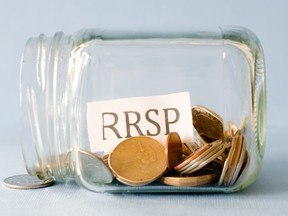FP Answers: It’s going to take some gain/loss calculations, but strategies like contributing to an RRSP or TFSA can offset gains

Article content
Q. I’m 49 years old and was part of an employee stock purchase plan (ESPP) many years ago. For every dollar I contributed, 50 cents were added by the employer and the money went to buying shares of the company every month. I transferred those shares to my online discount broker’s account at the time that I left the company. It is now 14 years later and I’d like to sell these shares. My brokerage statement shows a loss of $3,500 and a balance of $15,000 for those shares. I’m pretty sure I have a gain on these shares as I vaguely remember the share transfer being in the amount of $7,500. How do I find out what these shares are worth and how do I deal with these on my tax return for 2024. And is there any way of minimizing taxes on these shares? — Frances B.
Advertisement 2
Article content
Article content
Article content
FP Answers: Your challenge in determining the cost base for your employee stock purchase program shares is a common dilemma that many employees and former employees of publicly traded companies encounter, Frances.
When shares of a public corporation are transferred from an employee stock purchase plan (ESPP) to a self-directed or full-service brokerage account, the cost base is not always automatically carried over from the delivering institution. This is so prevalent that many discount brokerages allow clients to manually input their cost base data, which can then be submitted to the custodial record. This is usually not done in any formal capacity, with the brokerage simply complying with the client request. Some brokerages may go so far as to charge the client hourly to reconcile internal transactions that may have incorrectly captured the cost base.
Given that this is a reality in the process, the discrepancies that you describe could simply be that the book cost information was not correctly provided by the incoming institution or current brokerage.
Article content
Advertisement 3
Article content
There are several factors that contribute to the adjusted cost base. First, you would need to determine the most likely source that would hold this information for you. If you had an employer that issued public shares that were listed on Canadian exchanges, you may be able to get accurate reporting data directly from the employer by starting with their HR department. Since you purchased the shares on an ongoing basis, you may need to determine the share price at every purchase date. Additionally, if your company paid a dividend using a dividend reinvestment plan or “DRIP” program there will be reinvested dividends that increase your adjusted cost base at each dividend reinvestment date. To add to the complexity, if your employer was a U.S. or foreign company, you may need to account for foreign currency exchange rates.
Data such as share price history are usually accessible via the investor relations department of your former employer usually online, by mail, or phone. Currency exchange history can be found at online archival or retrieval services such as The Bank of Canada’s exchange rates lookup tool or the University of British Columbia’s Pacific exchange rate service.
Advertisement 4
Article content
Assuming that your ESPP is a non-registered account, determining your adjusted cost base will become important, as you want to ensure that the correct taxable transaction is captured on your tax return when you sell. This applies to both gains, where you will incur taxes, or losses, where you may be able to apply losses to other gains in the current, previous, or future years. If you are looking to minimize potential capital gains tax in the current tax year, there are a few strategies that could be employed such as offsetting gains with losses or making a registered retirement savings plan (RRSP) contribution to lower your overall taxable income.
Applying previous losses, or current losses against your capital gains is the most direct way to offset a taxable gain this year. If you have net capital losses from previous tax years, you can carry these forward indefinitely and could potentially be applied against gains incurred this year. Also, if you incur the capital gain this year without an offset, you could potentially use losses in future years to offset the gains this year. This can usually be done in the three tax years following the year the gain was taxable by requesting a capital loss carryback in the year of the future loss.
Advertisement 5
Article content
Another strategy is to use RRSP contributions to offset your gains. Since the gains for your investment sound modest, a moderate RRSP contribution this year could offset all the additional tax incurred by the disposition of your shares. To calculate the potential benefits, you would include 50 per cent of your taxable gain in your income in the year you dispose of the shares, as your gain is under $250,000 (realized gains exceeding $250,000 in a calendar year will be calculated using an inclusion rate of 66 per cent starting in 2026 as per the Department of Finance’s announcement in January). The RRSP contribution would allow you to offset the realized gain dollar for dollar or the taxable gain at 50 cents per dollar.
Recommended from Editorial
-

Can I rebalance my portfolio on my own?
-

Should I collect CPP and pay down my mortgage?
-

Should I hold onto my large portfolio or diversify?
If you don’t plan on selling the shares and plan to hold on to them over the medium to long term, there could be other tax strategies to consider. A popular strategy is to transfer your shares in-kind to your tax-free savings account (TFSA) so that future income and price appreciation occur tax-free. This does not free you from the requirement to calculate your adjusted cost base, as the transfer is considered a sale with capital gains triggered, but could help with future tax on capital growth and dividends if you have available contribution room.
Andrew Dobson is a fee-only, advice-only certified financial planner (CFP) and chartered investment manager (CIM) at Objective Financial Partners Inc. in London, Ont. He does not sell any financial products whatsoever. He can be reached at adobson@objectivecfp.com.
Bookmark our website and support our journalism: Don’t miss the business news you need to know — add financialpost.com to your bookmarks and sign up for our newsletters here.
Article content




